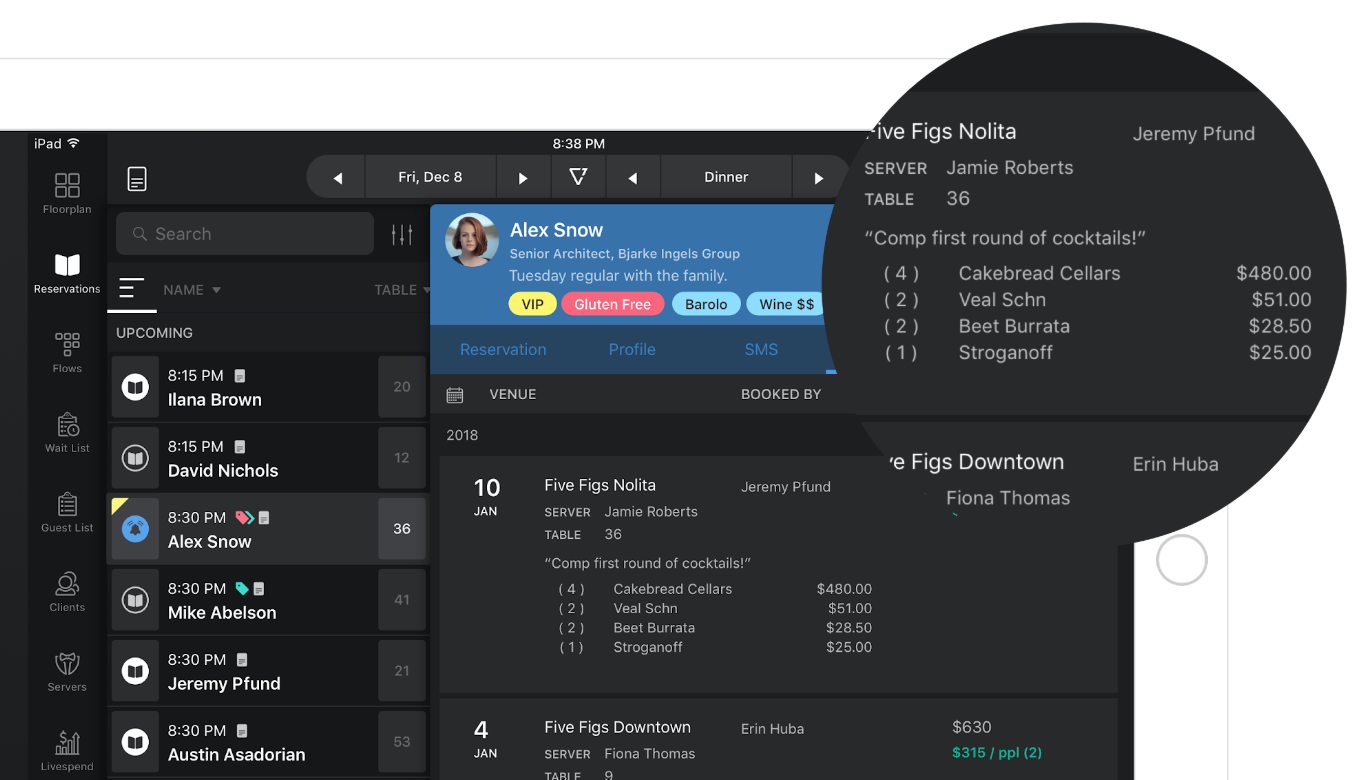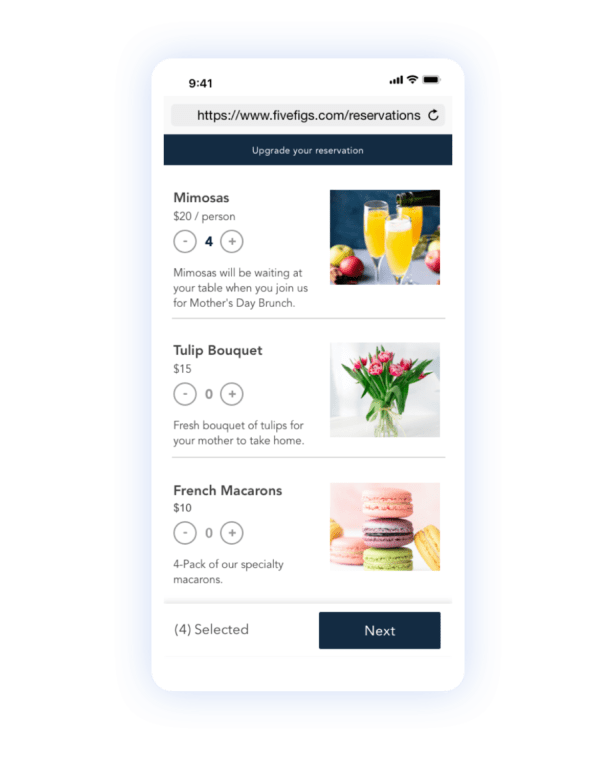7 Things to Consider Before Choosing a Restaurant Reservation System
Marybeth Sheppard
5 min read
Sep 14, 2023

Marybeth Sheppard
5 min read
Sep 14, 2023

Your restaurant reservation system is perhaps the most critical piece of technology at your property. It’s the operational system and the heartbeat of your entire front-of-house operation. Therefore, it’s important to understand the differences between reservation systems and how those differences may impact your bottom line.
Below, we’ll discuss seven important things to consider when choosing a restaurant reservation system. We selected these items based on our conversations with restaurant operators across the globe who need help streamlining vital booking processes without sacrificing the guest experience.
First and foremost, consider how you want to process reservations. There are two types of booking business models, both of which have their pros and cons.
Third-party apps function as reservation marketplaces. Using the services, restaurants list their seating inventory for diners (customers) to search for and book tables at venues in their area. Your restaurant gains visibility just by being on the platform, as marketplaces like OpenTable and Resy have extensive diner networks. (This is great for newer restaurants trying to establish a local presence.) Plus, you don’t need to build out a website, app, or process for taking reservations because the app already has one.
The downside is that these marketplaces charge hefty fees per booking, which could quickly become costly. Many marketplaces also operate on a pay-to-play system, positioning restaurants that pay steeper fees higher in the search results. And perhaps most damaging, you don’t get access to your customer data, which is vital for marketing and building customer relationships.
FYI: Recent data shows that more people are using Google and word-of-mouth to discover new restaurants than through reservation marketplaces.
With direct reservation platforms, you’re in charge. You can incorporate your own branding on all booking channels, and leverage the customer data you collect to create marketing campaigns that build loyalty and increase engagement.
These restaurant reservation systems often have features like a white-labeled reservation widget for websites and social channels as well as direct integrations with important online channels like Google, Facebook and Instagram to help you drive new bookings.

Dive Deeper: Restaurant Reservation System Comparison Guide
And if it does work with your existing tech stack, will working across several different platforms get confusing? The ability for technology solutions to talk to each other is critical — your POS system must sync with your PMS systems, online booking channels, and marketing solutions if you have any hopes of streamlining operations.
When shopping for restaurant reservation systems, consider the work required to integrate your existing tools as well as the specific data and functionality available as part of the integration.
For example, basic POS integrations will link a table to a check, update the table status and then push the final sales tally to that reservation when the check closes. Advanced POS integrations offer all of the above, while also syncing table orders and making critical guest data accessible to front-of-house and back-of-house staff.
For many restaurants, an all-in-one solution like SevenRooms that integrates and manages many of these solutions in one place is the most effective and efficient way to leverage restaurant technology for better guest (and staff) experiences.
 Image of SevenRooms’ Guest Profile with POS Integration
Image of SevenRooms’ Guest Profile with POS Integration
Most restaurant owners are well versed in local health and labor laws, but there are an increasing number of federal and international regulations that operators must follow.
Here’s a quick overview of the top three that impact reservations:
The Payment Card Industry Data Security Standard requires businesses to accept, process, store and transmit credit card information in a secure environment. For restaurants, this means using a PCI-compliant payment provider when taking payments over the phone or online. Make sure your reservation system offers tools that can request, store and charge credit card details while keeping the credit card number private.
In 2018, all restaurants were mandated to follow GDPR compliance when processing data. Consider how your reservation system tracks and manages customer data (names, birthdays, addresses, phone numbers, etc.). It must offer an easy way for you to export and delete this personal data, as any EU requestor can ask for the data you collected on their behalf and request it to be deleted.
The Americans with Disabilities Act requires businesses to ensure equal access to services for citizens with disabilities. This includes your restaurant and your website. Confirm that your reservation system offers an ADA-compliant online booking process, such as contrasting colors between text and backgrounds and compatibility with screen readers.
Pro Tip: Considering how many diners find your business online, all restaurants should care about website accessibility. Check out The World Wide Web Consortium’s (W3C) Web Content Accessibility Guidelines for more ways to make your website more inclusive to those with disabilities.
Reservation software has the power to massively increase your revenue — if you use it to fuel unforgettable dining experiences. Nearly three in four millennials would rather spend money on experiences than material goods, specifically food-focused events.
Consider how your restaurant reservation system will help you create unique, personalized experiences that have guests returning again and again. Here are a few must-have features for generating loyalty and increasing your profit margins:
 Prepaid reservation add-ons elevate your guest experience and increase average spend at the same time.
Prepaid reservation add-ons elevate your guest experience and increase average spend at the same time.
Beyond filling tables, there’s so much more to proper reservation management. Look for features that help the front-of-house move people through the restaurant quickly without sacrificing the guest experience, such as:

Learn More: Revenue Management: How to Make More Money From the Same Seats
Reservation software costs vary widely depending on features and functionality, but most platforms charge monthly or annual fees. Based on our research, “starter” or “basic” plans can cost as low as $50 for some providers. However, pricing can exceed $800 or more per month if you opt for more advanced systems with CRM capabilities.
Compare the program’s costs with the features you need to operate smoothly. Be sure to also account for start-up fees, cover fees, a la carte upgrades, and other additional costs that come with adding restaurant technology to your business.
Once you choose a reservation system, you’ll need to consider how your team will onboard and learn the software. Many platforms offer onboarding and training support to make the transition easier.
You should also consider the types of ongoing support you’ll need if issues arise. Remember, running a restaurant is hardly a traditional 9-to-5, so you’d be wise to prioritize a solution that offers 24/7 support.
The next time you demo a new restaurant reservation system, ask these questions:
Your restaurant is unlike any other, so why settle for a one-size-fits-all technology partner? You need a flexible, robust solution that can meet your needs and give your team the tools to deliver the best possible guest experience. SevenRooms’ reservation system was built to help operators streamline operations, improve loyalty and drive incremental revenue. We’re ready for a demo when you are.